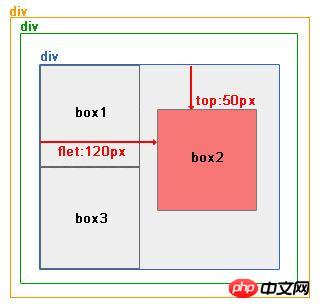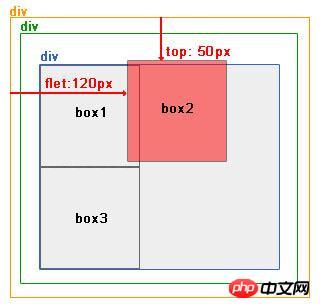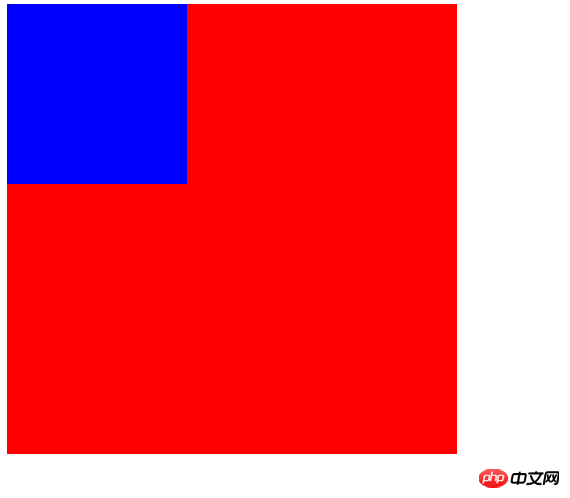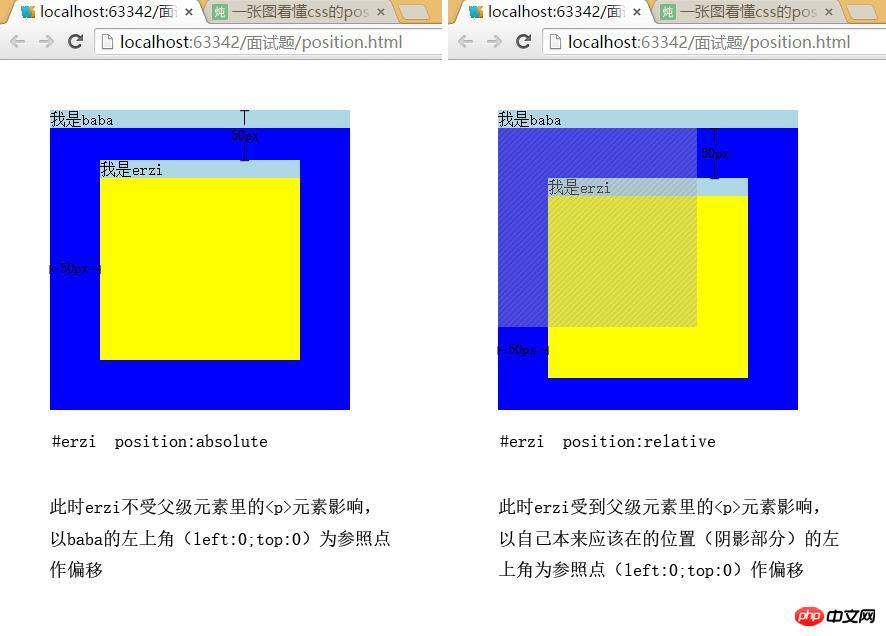
Positioning refers to determining the orientation; determining or pointing out the place; determining the location or boundaries (such as through surveying) to locate the boundaries of this property.
The positioning content in CSS is: position: relative | absolute | static | fixed. static has no special settings, follows basic positioning regulations, and cannot be hierarchical through z-index. In the text flow, any element has its own position limited by the text flow, but through CSS we can still make these elements change their position. We can make the elements float through float, and we can also make the elements through margin. Produce positional movement.
1. Detailed introduction to absolute positioning and relative positioning in CSS


The hierarchical relationship is:
2. Introduction to relative positioning and absolute positioning of CSS
Generally if we do not set position for the element , the default is static. At this time, the element is not positioned, and offset attributes such as left/right have no effect.
3.Comprehensive understanding and analysis about absolute positioning
Because the position of the element is relative to its position in the ordinary flow. The position of an absolutely positioned element is relative to the nearest positioned ancestor element.
If the element has no positioned ancestor elements, its position is relative to the original containing block.
Before the positioning is set, the large box wraps the small box, which conforms to the standard document flow, as shown in the picture

Web front-end interview question No. 8 - Absolute positioning and relative positioning
Relative positioning (relative): Let’s talk about relative positioning first: just like its name, relative, to There is a reference, but this reference is nothing but its own position in the original document flow. The object after relative positioning is not completely separated from the document flow. The original position of the object in the document is retained (standing in the toilet without shitting), and the offset object will cover other layers. 5.Detailed explanation of the three basic positioning mechanisms in CSS
CSS has three basic positioning mechanisms: ordinary flow, floating and absolute positioning. All boxes are positioned in the normal flow unless specifically specified. That is, the position of an element in the normal flow is determined by the element's position in (X)HTML. Block-level boxes are arranged one after another from top to bottom, and the vertical distance between boxes is calculated from the vertical margin of the box. 6.Summary of the four common positioning properties in css (left right top bottom)
DIV CSS left right top bottom positioning These four CSS property styles are used To position the object box, the position attribute value must be defined as absolute or relative. Left is the distance value between the left side of the current element and the left side of the parent element (which is the original default position). Right is the distance value between the right side of the current element and the right side of the parent element. Top The distance between the top of the current object and the top of the original position. Bottom How far is the bottom of the current object from the original position7.Analyze the difference between relative and absolute in css position

The first three are easy to understand and distinguish:
static: It is the default state, there is no positioning, and the element appears in the normal flow ( Ignore top, bottom, left, right or z-index declarations).
nherit: Inherit the value of the position attribute from the parent element.
fixed: Generate absolutely positioned elements, positioned relative to the browser window. (That is, when scrolling the browser, the element is always displayed at a certain position in the visible area of the window).
8. HTML CSS determines positioning and filter details
.position:relative;relative counterposition
does not affect the characteristics of the element itself;
Do not take the element out of the document flow;
If there is no positioning offset, it will have no effect on the element itself;
Positioning element position control: top/right/bottom/left;
The overflow of the parent under IE6: hidden cannot cover the relative positioning of the subset; to solve the problem, you only need to
Add positioning elements to the parent;
Under IE6 When the parent width and height of the positioned element are both odd numbers, the bottom and right of the positioned element will have a deviation of
1px
9. CSS Positioning (positioning) | CSS Online Manual
CSS positioning properties allow you to position an element. It can also place one element behind another and specify what should happen if one element's content is too large.
Elements can be positioned using the top, bottom, left and right attributes. However, these properties will not work unless the position property is set first. They also work differently, depending on the positioning method.
There are four different positioning methods.
Related questions and answers:
2. css - Conflict between HTML positioning problem percentage and padding margin border
[Related article recommendations]:
1 . How to add Google positioning information to the website
2. Detailed analysis of the positioning of the CSS box model
The above is the detailed content of Summary of relative positioning and absolute positioning in html CSS. For more information, please follow other related articles on the PHP Chinese website!




